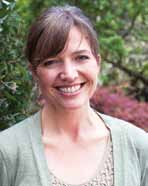Campus News
Editor’s Note: Where were you?
People often ask, “Where were you?” when something momentous and tragic happens—I guess it’s a way to bond, grieve, and share.One such event occurred at 5:04 p.m. on October 17, 1989—25 years ago this month.

Where were you?
It’s a question people often ask each other when something momentous and tragic happens—I guess it’s a way to bond, grieve, and share.
One such event occurred at 5:04 p.m. on October 17, 1989—25 years ago this month. The Loma Prieta earthquake shocked Santa Cruz County and the surrounding area, including the Bay Area and the San Francisco Peninsula. Sixty-three people died, thousands were injured, and several of the Bay Area’s major transportation structures suffered catastrophic failures.
So … where were you? If you’re old enough to remember (some of our younger readers weren’t even born yet), the earthquake stays with you forever.
I was in a little house on College Avenue in Berkeley, where I lived with roommates while studying at UC Berkeley. A California kid, I’d been through many rounds of earthquake training in school. When the Earth shrugged, I dove under my desk. We were lucky—shaken but uninjured. In the next few hours and days, however, we would learn just how devastating the quake had been.
Earthquake knowledge and technology has come a long way since then—and UC Santa Cruz scientists have played a role in that advancement. Seismologists here, including Thorne Lay, Susan Schwartz, and Emily Brodsky, have been working to integrate data, understand the different types of slips that occur on faults, measure friction heat generated during fault slippage, and more. Their work has helped increase understanding of the basic physics of quakes—a first step toward better prediction of them.
As the campus looks both back and forward as it approaches its 50th birthday in 2015, it’s these kinds of things—memories of the past, introspection on history, working to understand our environment and improve our future—that make me proud to be part of a place like this.
Maybe—just maybe—when the next “big one” is coming, we’ll already know.
— Gwen Jourdonnais, editor